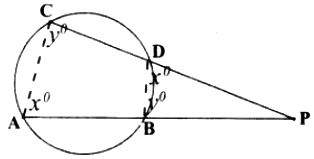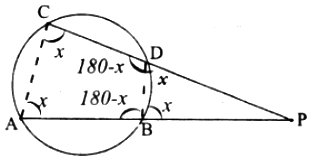
i. As ABCD is a cyclic quadrilateral.
If ∠BAC = x° then ∠BDC = 180 – x ∠BDP = x°
If ∠ACD = y° then ∠PBD = y° As ∠APC is common angle.
Angles of Δ APC and Δ PBD are same
ii. As △APC, △PBD are similar triangles,
\(\frac{AP}{PD}=\frac{PC}{PB}\) AP x PB = PC x PD
iii. If PB = PD ; AP = PC
In ABCD
ABDC is a cyclic quadrilateral, so their opposite angles are supplementary.
If AP = PC, in ∆ APC
∠A =∠C

As AB = CD
AC || BD
Adjacent angles are supplementary
∴ ABCD will be an isosceles trapezium